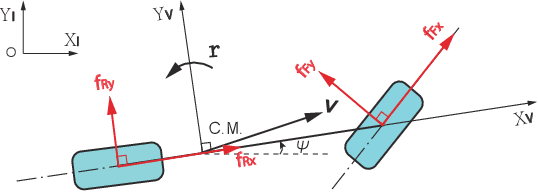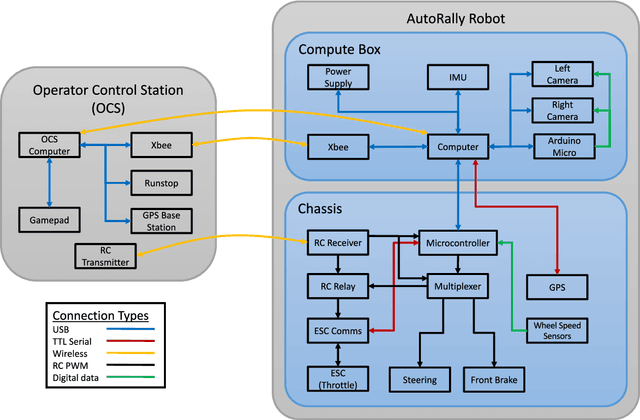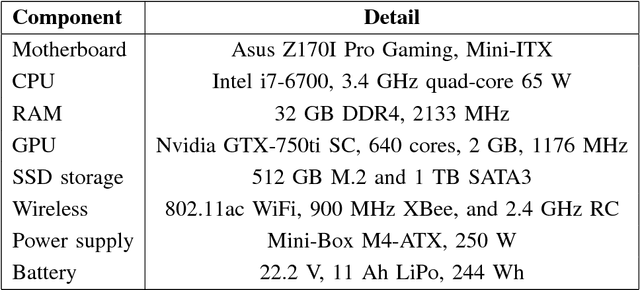Changxi You
Real Time Motion Planning Using Constrained Iterative Linear Quadratic Regulator for On-Road Self-Driving
Feb 17, 2022



Abstract:Collision avoidance is one of the most challenging tasks people need to consider for developing the self-driving technology. In this paper we propose a new spatiotemporal motion planning algorithm that efficiently solves a constrained nonlinear optimal control problem using the iterative linear quadratic regulator (iLQR), which takes into account the uncertain driving behaviors of the traffic vehicles and minimizes the collision risks between the self-driving vehicle (referred to as the "ego" vehicle) and the traffic vehicles such that the ego vehicle is able to maintain sufficiently large distances to all the surrounding vehicles for achieving the desired collision avoidance maneuver in traffic. To this end, we introduce the concept of the "collision polygon" for computing the minimum distances between the ego vehicle and the traffic vehicles, and provide two different solutions for designing the constraints of the motion planning problem by properly modeling the behaviors of the traffic vehicles in order to evaluate the collision risk. Finally, the iLQR motion planning algorithm is validated in multiple real-time tasks for collision avoidance using both a simulator and a level-3 autonomous driving test platform.
AutoRally An open platform for aggressive autonomous driving
Jun 02, 2018



Abstract:This article presents AutoRally, a 1$:$5 scale robotics testbed for autonomous vehicle research. AutoRally is designed for robustness, ease of use, and reproducibility, so that a team of two people with limited knowledge of mechanical engineering, electrical engineering, and computer science can construct and then operate the testbed to collect real world autonomous driving data in whatever domain they wish to study. Complete documentation to construct and operate the platform is available online along with tutorials, example controllers, and a driving dataset collected at the Georgia Tech Autonomous Racing Facility. Offline estimation algorithms are used to determine parameters for physics-based dynamics models using an adaptive limited memory joint state unscented Kalman filter. Online vehicle state estimation using a factor graph optimization scheme and a convolutional neural network for semantic segmentation of drivable surface are presented. All algorithms are tested with real world data from the fleet of six AutoRally robots at the Georgia Tech Autonomous Racing Facility tracks, and serve as a demonstration of the robot$'$s capabilities.
 Add to Chrome
Add to Chrome Add to Firefox
Add to Firefox Add to Edge
Add to Edge